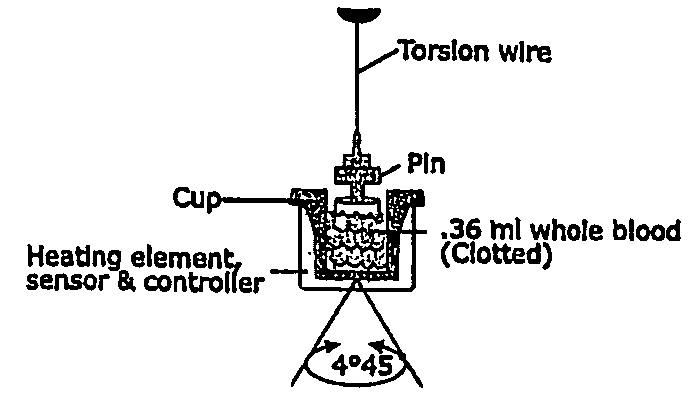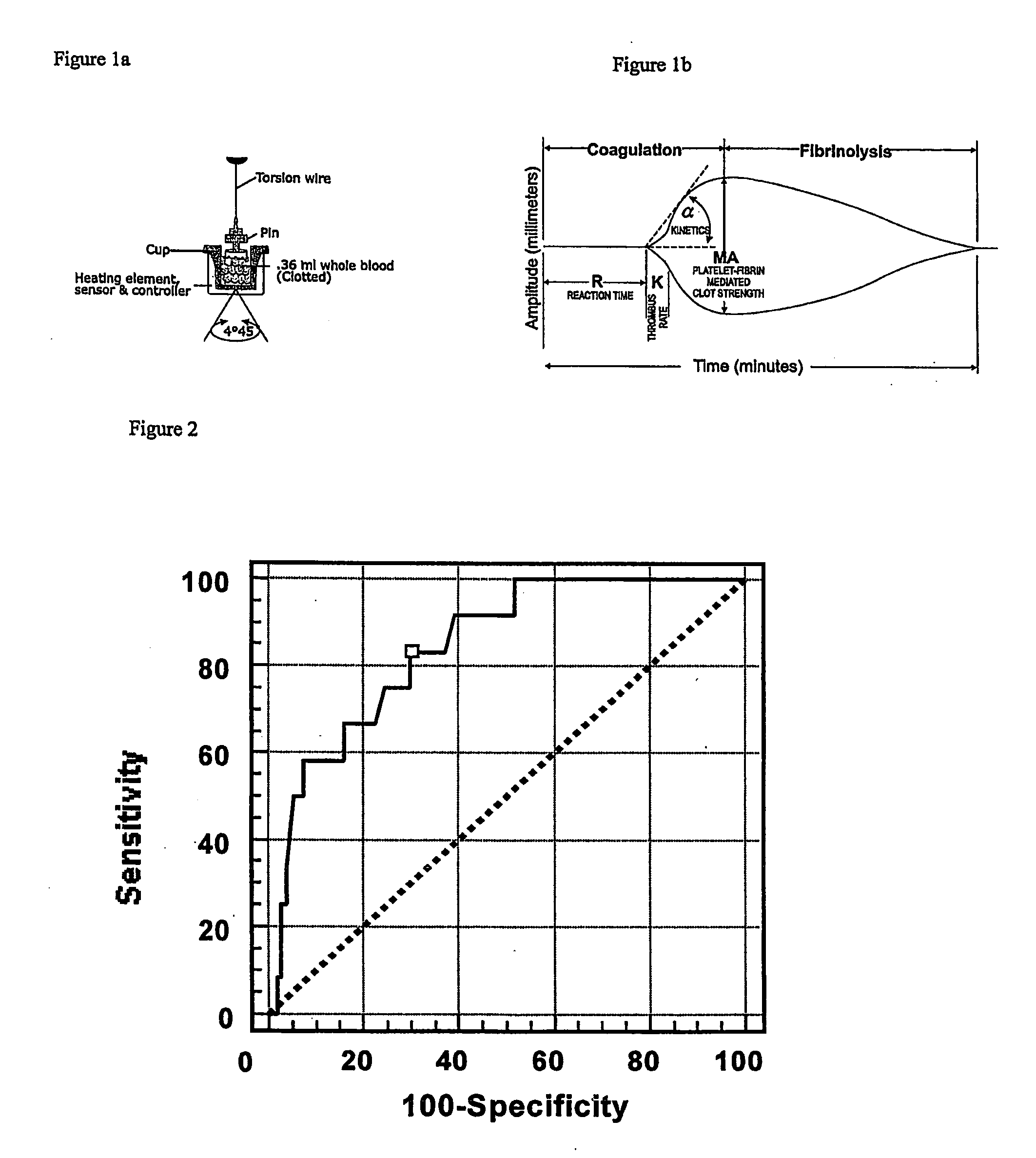Detection of restenosis risk in patients receiving a stent by measuring the characteristics of blood clotting including the measurement of maximum thrombin-induced clot strength
a technology of blood clot strength and stent, which is applied in the direction of prosthesis, blood vessels, instruments, etc., can solve the problems of thrombosis risk, high cost of drug-eluting stent, and prolonged therapy, and achieve the effect of preventing complications
- Summary
- Abstract
- Description
- Claims
- Application Information
AI Technical Summary
Benefits of technology
Problems solved by technology
Method used
Image
Examples
Embodiment Construction
[0024]Platelets play a fundamental role in the genesis of stent restenosis by mediating inflammation and smooth muscle proliferation. Thrombi with high tensile strength may facilitate growth factor release to the adjacent vessel wall resulting in neointimal hyperplasia.
[0025]Applicant measured pretreatment ex vivo maximum thrombin-induced clot strength, time to fibrin formation, and the combined clotting index with thrombelastography (TEG) in 178 consecutive patients undergoing elective stenting of de novo (n=160) and restenotic lesions (n=18) and in 25 healthy controls. Patients were followed for 6 months for the development of symptomatic restenosis. Patients who developed restenosis (n=28) had greater maximum clot strength (71.0±5.0 vs. 66.1±7.0, p=0.0004), higher combined clotting indices (3.4±1.8 vs 2.1±2.3, p=0.005) and more rapid fibrin generation times (4.0±1.0 vs 4.8±1.7, p=0.03) than patients without restenosis and healthy controls (p<0.05 for all measurements). The relati...
PUM
 Login to View More
Login to View More Abstract
Description
Claims
Application Information
 Login to View More
Login to View More - R&D
- Intellectual Property
- Life Sciences
- Materials
- Tech Scout
- Unparalleled Data Quality
- Higher Quality Content
- 60% Fewer Hallucinations
Browse by: Latest US Patents, China's latest patents, Technical Efficacy Thesaurus, Application Domain, Technology Topic, Popular Technical Reports.
© 2025 PatSnap. All rights reserved.Legal|Privacy policy|Modern Slavery Act Transparency Statement|Sitemap|About US| Contact US: help@patsnap.com


